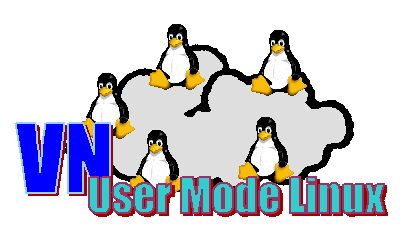VNUML Installation Guide
|
 |
| Contents | |
1. Installation 1.1. Perl Modules manual installation 2. SuSE specific issues 3. Mandrake specific issues |
|
| 1. Installation | |
|
VNUML 1.5 package includes an easy to use installer thanks to Tony Prug contributions. The old tedious step-by-step installing way isn't needed anymore. The most of the case, all you need to install VNUML is untar the package in your GNU/Linux box (the package is quite distribution agnostic, but specific issues for SuSE and Mandrake can be found later in this document) and perform the following operations. A Internet connection is needed, in order the installation scripts connect to CPAN (and other places) to get Perl modules and other libraries. Note that UML simulations generally consume a lot of physical host resources (CPU, disk storage, RAM, etc). As a minimum, you need a standard Pentium III 500 Mhz with 128 Mb RAM to perform the tutorial included in the documentation. However, at least 256 Mb (better 512 Mb) and a faster CPU are recomended to execute more complex scenarios. ./configure make make install (The lastest command needs root privileges in the host) Several options can be configured using Host kernel needs include tun and loop support in order to work properly. Skas support is also very desirable. 8012q is also required if you plan to use the VLAN features of VNUML. Please read the INSTALL file that comes with the package in order to get futher information and details. 1.1. Perl modules manual installationIn the case of you are installing in a host without Internet connection or when CPAN autoinstallation fails (some users have reported this problem), you may find useful installing Perl Modules manually, as was done in old pre-packaged VNUML versions. The required Perl modules can be found here (note that the VNUML local storage may be old of date, we recommend you to find always the newest stable version of this modules in CPAN):
Perl modules are distributed as .tar.gz files. The standarized way to install them is the following:
If you find some required module is missing in the list before, please, tell us in order to add it. |
|
| 2. SuSE specific issues | |
|
SuSE releases seems to have a (yet strange) bug that imposes to change -eth0 network interface names to -ethX in order to work. Anyway, you don't have to worry if installing VNUML in a SuSE box, because of the installing scripts are cleaver enough to detect the situation and patch the program. In the case of using VNUML in a SuSE box, you should see the "SuSE" string appended to the version number when getting the vnumlparser version: kastrup# vnulmparser.pl -V This is vnumlpaser.pl version: 1.5.0-rc2.SuSE (01/12/2004) Fermín Galán Márquez. galan@dit.upm.es |
|
| 3. Mandrake specific issues | |
|
From https://lists.dit.upm.es/pipermail/vnuml-users/2004-November/000115.html.
|
|
|
|
|